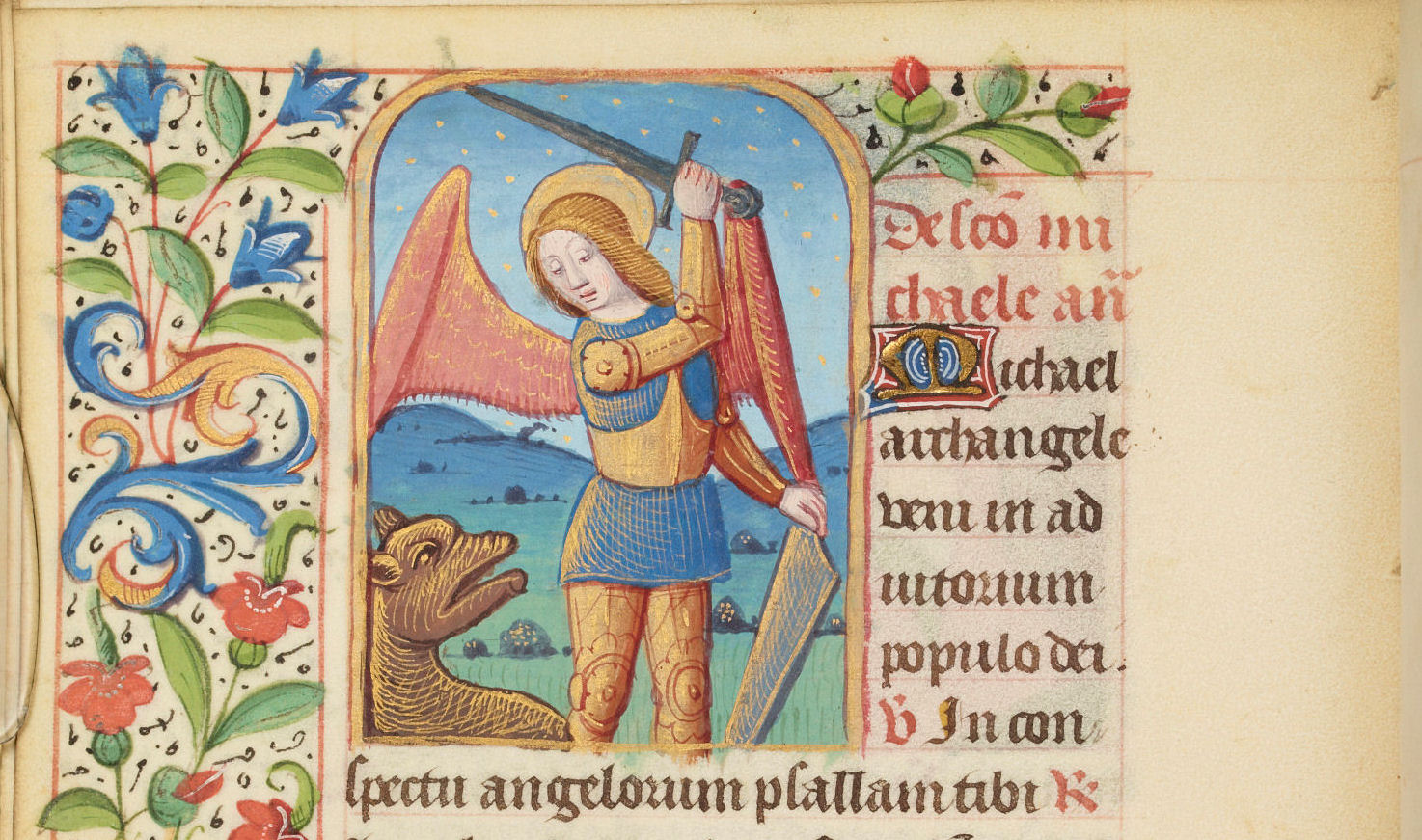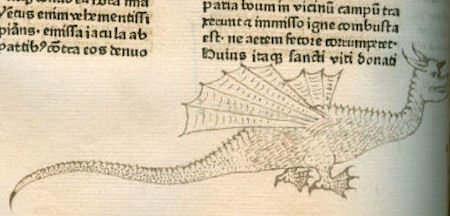
The earliest dragons from our collections are both found in late fifiteenth-century works.
In the French Book of Hours (Liverpool University Library MS.F.2.8, 135v) illustration above, the sword-wielding saint is not St George but St Michael the Archangel, whose iconography depicts him repelling the dragon Satan from Heaven. The painted picture is one of eleven depicting various saints in the Memorials section of the liturgy.

This scaly dragon has been drawn in the margin of one of the earliest printed books in the collection: the Historia ecclesiastica tripartita (1478) by Flavius Magnus Aurelius Cassiodorus (SPEC EP.I.C345.1). The volume has copious marginal annotations in a contemporary hand (15th or early 16th century). The dragon illustration is drawn by a passage in the text mentioning dragons.

 Later printed illustrations of dragons include the Winged Dragon from The history of four-footed beasts and serpents, by Edward Topsell, 1658 (SPEC H49.23), which gives a detailed account of the history and habits of many types of dragon. The wings and scaly body of the Winged type bear a remarkable resemblance to the Cassiodorus dragon. Topsell explains that dragons cannot eat apples, which make them sick, but are that they are fond of wild lettuce and fennel.
Later printed illustrations of dragons include the Winged Dragon from The history of four-footed beasts and serpents, by Edward Topsell, 1658 (SPEC H49.23), which gives a detailed account of the history and habits of many types of dragon. The wings and scaly body of the Winged type bear a remarkable resemblance to the Cassiodorus dragon. Topsell explains that dragons cannot eat apples, which make them sick, but are that they are fond of wild lettuce and fennel.
The children’s book collections include fine examples of dragons, from the oriental Dragons of Kinabalu (OLDHAM 831) and Pekin (JUV A209.1) to St George’s foe himself, in Heroic Legends by Agnes Grozier Herbertson, with Helen Stratton’s depiction of St George and the vanquished dragon safely captured.
